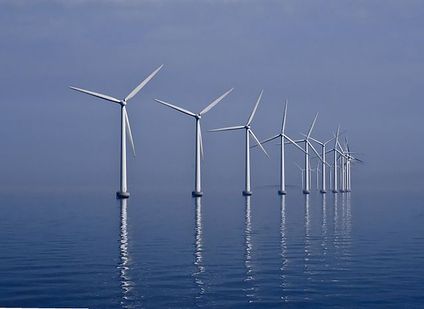| (One intermediate revision by the same user not shown) | |||
| Line 95: | Line 95: | ||
'''2017''' | '''2017''' | ||
[[File:AlleeImFruehling.jpg|140px|left]] | |||
[[Community energy USA]]: Hundreds of US mayors endorse switch to 100% renewable energy by 2035, Jun 26 <ref>[https://www.theguardian.com/environment/2017/jun/26/hundreds-of-us-mayors-vow-not-to-wait-for-trump-on-clean-energy The Guardian]</ref><br clear=left> | |||
[[File:Middelgrunden wind farm 2009.jpg|140px|left]] | [[File:Middelgrunden wind farm 2009.jpg|140px|left]] | ||
Revision as of 08:25, 28 June 2017
|
Definition of sustainable energySustainable energy is defined, for the purposes of this article, as energy which, in its production or consumption, has minimal negative impacts on human health and the healthy functioning of vital ecological systems, including the global environment, and that can be supplied continuously to future generations on earth. Such forms of energy include, but are not limited to the following: solar thermal, solar photo-voltaic (PV), wind, hybrid wind-solar, fuel cell, geothermal, small-scale (mini- and pico-) hydro-electric, tidal and wave. This definition specifically excludes nuclear and fossil fuel energy or their “improvements” as an option thereof. [1] What communities can do
Campaigns
Why it mattersError in widget YouTube: Unable to load template 'wiki:YouTube'
Sustainable energy is about renewable, clean or green energy, and energy efficiency or saving energy. (longer article needed) It doesn´t include nufo (nuclear or fossil fuel) energies. Energy povertyEnergy poverty is lack of access to modern energy services. It refers to the situation of large numbers of people in developing countries whose well-being is negatively affected by very low consumption of energy, use of dirty or polluting fuels, and excessive time spent collecting fuel to meet basic needs. It is inversely related to access to modern energy services, although improving access is only one factor in efforts to reduce energy poverty. Energy poverty is distinct from fuel poverty, which focuses solely on the issue of affordability. According to the Energy Poverty Action initiative of the World Economic Forum, "Access to energy is fundamental to improving quality of life and is a key imperative for economic development. In the developing world, energy poverty is still rife. Nearly 1.6 billion people still have no access to electricity, according to the International Energy Agency (IEA).". As a result of this situation, a new UN initiative has been launched to coincide with the designation of 2012 as the International Year for Sustainable Energy for All, which has a major focus on reducing energy poverty. W Error in widget YouTube: Unable to load template 'wiki:YouTube'
Community solar farmA community solar farm or garden is a solar power installation that accepts capital from and provides output credit and tax benefits to individual and other investors. In some systems you buy individual solar panels which are installed in the farm after your purchase. In others you purchase kW capacity or kWh of production. The farm's power output is credited to investors in proportion to their investment, with adjustments to reflect ongoing changes in capacity, technology, costs and electricity rates. Companies, cooperatives, governments or non-profits operate the farms. Centralizing the location of solar systems has advantages over residential installation that include:
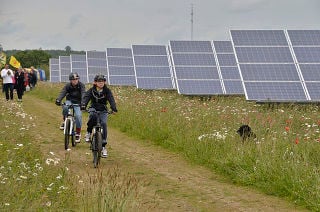 Decentralized energyDistributed energy, also district or decentralized energy is generated or stored by a variety of small, grid-connected devices referred to as distributed energy resources (DER) or distributed energy resource systems. Conventional power stations, such as coal-fired, gas and nuclear powered plants, as well as hydroelectric dams and large-scale solar power stations, are centralized and often require electricity to be transmitted over long distances. By contrast, DER systems are decentralized, modular and more flexible technologies, that are located close to the load they serve, albeit having capacities of only 10 megawatts (MW) or less. DER systems typically use renewable energy sources, including small hydro, biomass, biogas, solar power, wind power, and geothermal power, and increasingly play an important role for the electric power distribution system. A grid-connected device for electricity storage can also be classified as a DER system, and is often called a distributed energy storage system (DESS). By means of an interface, DER systems can be managed and coordinated within a smart grid. Distributed generation and storage enables collection of energy from many sources and may lower environmental impacts and improve security of supply. W Energy auditAn energy audit is an inspection, survey and analysis of energy flows for energy conservation in a building, process or system to reduce the amount of energy input into the system without negatively affecting the output(s). An energy audit is the first step in identifying opportunities to reduce energy expense and carbon footprints. W Energy efficiencyAccording to the International Energy Agency, improved energy efficiency in buildings, industrial processes and transportation could reduce the world's energy needs in 2050 by one third, and help control global emissions of greenhouse gases. Energy efficiency and renewable energy are said to be the twin pillars of sustainable energy policy and are high priorities in the sustainable energy hierarchy. In many countries energy efficiency is also seen to have a national security benefit because it can be used to reduce the level of energy imports from foreign countries and may slow down the rate at which domestic energy resources are depleted. W MicrogenerationMicrogeneration is the small-scale generation of heat and electric power by individuals, small businesses and communities to meet their own needs, as alternatives or supplements to traditional centralized grid-connected power. Although this may be motivated by practical considerations, such as unreliable grid power or long distance from the electrical grid, the term is mainly used currently for environmentally conscious approaches that aspire to zero or low-carbon footprints or cost reduction. W MicrogridsMicrogrids are modern, localized, small-scale grids, contrary to the traditional, centralized electricity grid (macrogrid). Microgrids can disconnect from the centralized grid and operate autonomously, strengthen grid resilience and help mitigate grid disturbances. They are typically low-voltage AC grids, often use diesel generators, and are installed by the community they serve. Microgrids increasingly employ a mixture of different distributed energy resources, such as solar hybrid power systems, which reduce the amount of emitted carbon significantly. W Sustainable community energy systemA sustainable community energy system is an integrated approach to supplying a local community with its energy requirements from renewable energy or high-efficiency co-generation energy sources. The approach can be seen as a development of the distributed generation concept. Such systems are based on a combination of district heating, district cooling, plus 'electricity generation islands' that are interlinked via a private wire electricity system (largely bypassing the normal power grid to cut transmission losses and charges, as well as increasing the robustness of the system). The surplus from one generating island can therefore be used to make up the deficit at another. W |
News and comment2017  Community energy USA: Hundreds of US mayors endorse switch to 100% renewable energy by 2035, Jun 26 [2] 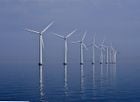 Denmark Danish Energy Cooperative Lets Consumers Collectively Build Wind Turbines, Jun 21 [3] 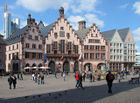 Germany: How Residents of Hamburg Reclaimed the Power Grid, Jun 21 [4]  Community energy UK: Local energy firms power 130,000 homes - the power of your community revealed, Jun 20 [5]  Community energy USA: How Electricity Cooperatives in the US are Paving the Way for a Renewable Future, Jun 19 [6] The Case for Local, Community-led Sustainable Energy Programs, Jun 19 [7] 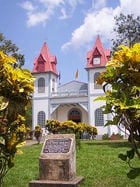 Costa Rica Could Reach 300 Days Running on Clean Energy, Jun 17 [8]  Tilos, Greece: the first island in the Med to run entirely on wind and solar power, Jun 15 [9]  Hawaii: Fossil-free islands: A blueprint for sustainable development? Jun 14 [10]  India news: Hop on the bandwagon: #GoSolar bus tours Delhi to make solar power cool, Jun 11 [11]  China news: Solar power lights up the path to prosperity, Jun 12 [12] Oceania: World Bank announces project to bring renewable energy to 45,000 people in Vanuatu, Jun 1 [13]  Western Australia: Blackout parties: how solar and storage made Western Australia farmers the most popular in town, May 15 [14]  How A Man With No Coding Experience Built An App That’s Bringing Solar Power To Yemen, May 8 [15]  Victoria backs renewable energy community hubs with $900,000 investment, Apr 28 [16]  Off-grid living: it's time to take back the power from the energy companies, Apr 11 [17]  Barcelona: El ayuntamiento crea Barcelona Energia para autoabastecerse de electricidad, Mar 30 [18] 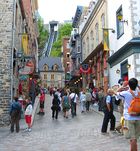 Meet the First Nation Above the Arctic Circle That Just Went Solar, Mar 28 [19]  India news: Solar power lights up remote villages in Rajasthan, Mar 27 [20]  New York City: Solar Experiment Lets Neighbors Trade Energy Among Themselves, Mar 13 [21]  What rural Alaska can teach the world about renewable energy, Mar 6 [22]  Energy positive: how Denmark's Samsø island switched to zero carbon, Feb 23 [23] 2016  Three lessons for cities in Denmark’s clean-energy revolution, Jun 30 [24] 2015 60 Minutes On This Bicycle Can Power Your Home For 24 Hours, December 14 [25] Cities And Regions Moving Towards 100% Renewable Energy, December 8 [26] The co-benefits of community energy, October 8 [27] Renewable Energy Now Employs 7.7 Million People Worldwide, May 19 [28]  Kenya: The startup that's powering rural Africa with affordable, smart microgrids, May 13 [29] This striking chart shows why solar power will take over the world, April 15 [30] 2014 Energy: Thriving On Five Percent? March 3 [31] ResourcesCitizens data initiativeIn developing countries, more than 1 billion people have no access to reliable electricity and more than 2.5 billion people rely on polluting and inefficient biomass and coal use for cooking and heating. [32] MapsNetworksCreative Commons LeNSes (Learing Network on Sustainable energy systems), multi-polar Network for curricula and lifelong learning capacity development focused on System Design for Sustainable Energy for All. It is a 3 year project (Oct 2013 - Oct 2016) funded by the European Commission (ACP-EU Edulink II), involving 3 design schools in Europe and 4 in Africa. Other 100% Renewable Energy Cities & Regions Network, iclei.org micro hydropower on Yahoo Groups Sustainable ebergy on pinterest Quotes"My passion isn’t for hydro, it’s for people taking control of their own futures." Ann Harding, Settle Hydro [33] VideoError in widget YouTube: Unable to load template 'wiki:YouTube'
Error in widget YouTube: Unable to load template 'wiki:YouTube'
See also
Interwiki linksWikipedia: Sustainable energy, Microgeneration, Community solar farm, Energy generation and uses, Energy harvesting, Efficient energy use, Cogeneration, District heating, District cooling, Energy audit, Energy hierarchy, Stand-alone power system, Energy conservation (category), Renewable energy (category) Error in widget YouTube: Unable to load template 'wiki:YouTube'
Solarcooking, wikia.com: GoSol.org External linksError in widget YouTube: Unable to load template 'wiki:YouTube'
|
